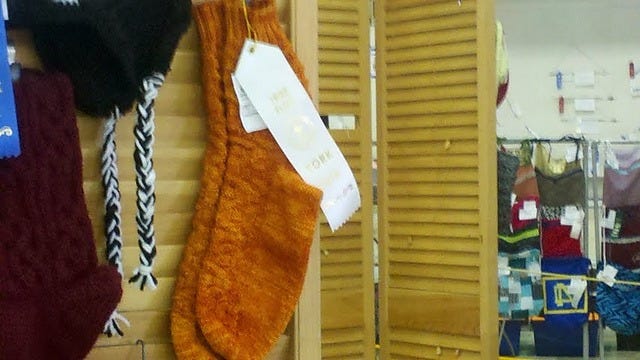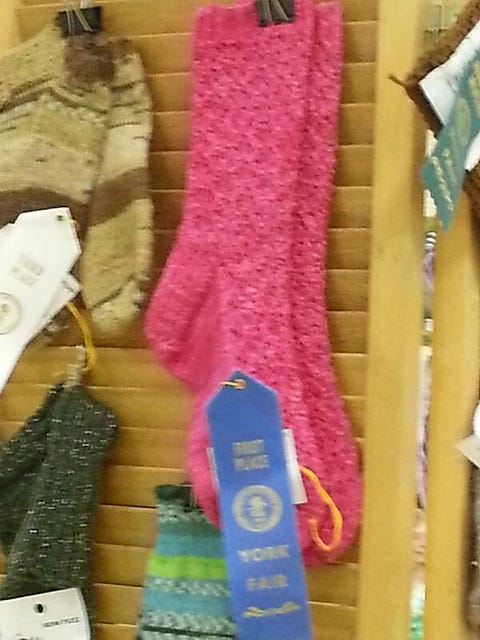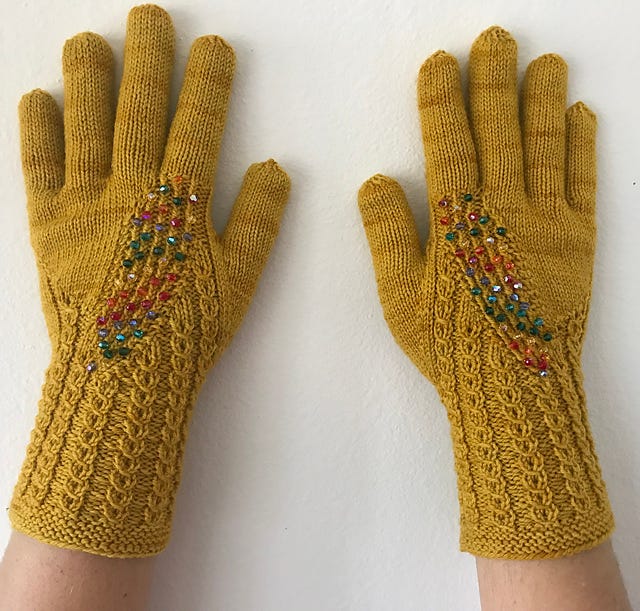Competing at the county fair is not as daunting as you might think
Filling out a form (and showing up) is half the battle to becoming an award-winning knitter.
If you live in certain suburban and rural portions of the country, you might be aware of your local county fair. Here in Pennsylvania, they’re usually around the end of summer, and typically part of it takes place during Labor Day weekend. Some happen deeper in the fall. When I lived in Florida, county fairs usually happened in January because the weather was nicer than in late August.
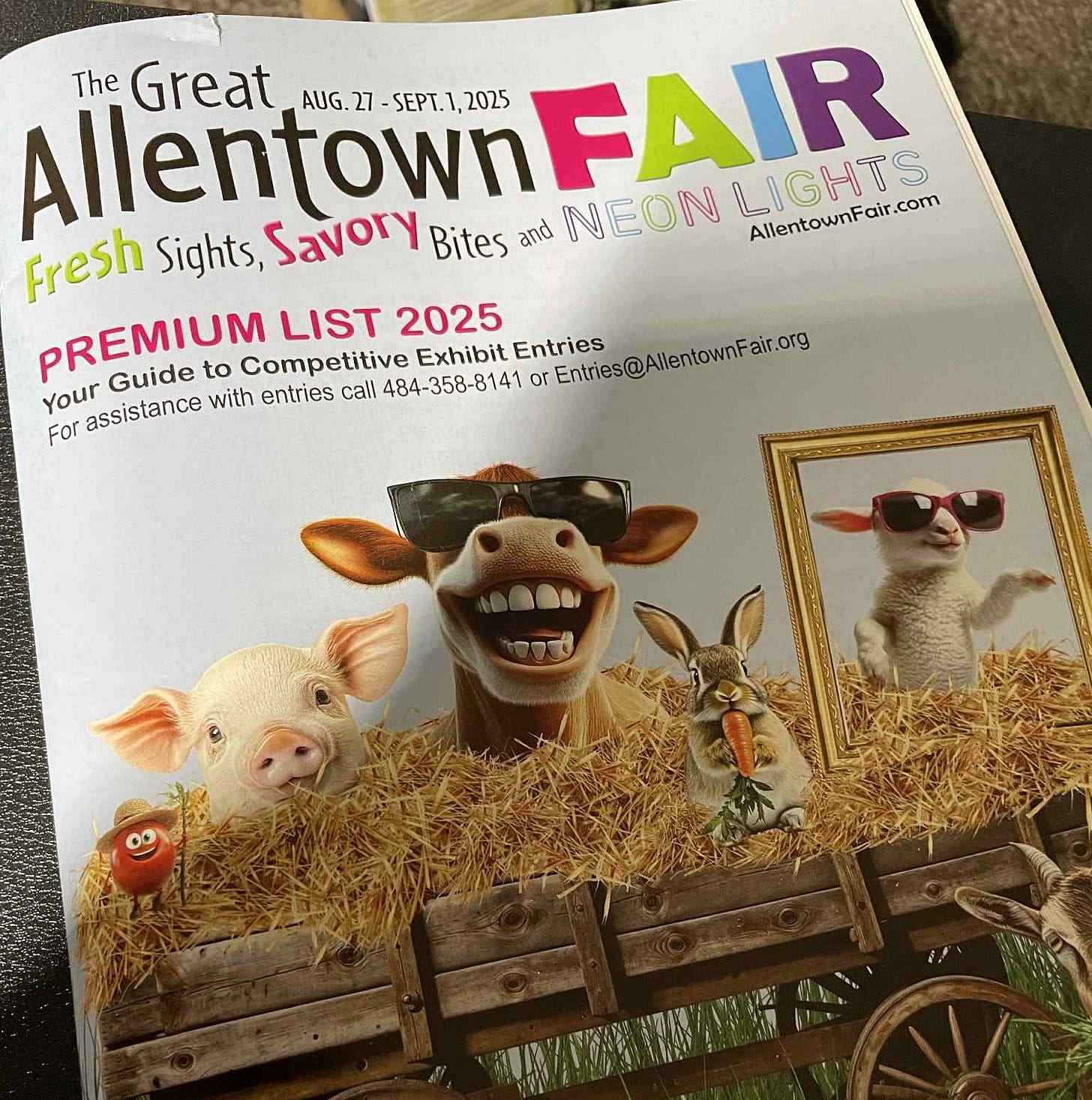
Did you know you could compete with other knitters for blue ribbons, bragging rights, free fair tickets and a few bucks at your county fair? Did you know that you don’t even have to be a fantastic knitter to compete? Many county fairs have knitting competitions, and I’m here this week to tell you about my experiences with multiple county fairs and encourage you to submit your crafts, no matter where you are in your knitting journey. This year, I’m submitting some of my knitting and cross stitch to the Allentown Fair in Pennsylvania, because that is my closest, largest fair, and the one nearest to my husband’s hometown. His family members are longtime fair-goers. If you’re in the area, I challenge you to compete with me! In fact, I dare you!
How to get started knitting for competition
Do you have something you’ve made within the past year? Great! You’re well on your way to winning your first blue ribbon. Figure out when your nearest county fair is and visit the website. Usually there’s part of the fair site that has “exhibits” on it. Here is Allentown’s.
Your next step is to locate the “premium book” or exhibit catalog. Allentown sends a print copy of the premium book every year to previous exhibitors, but you can also access it on the fair website. The premium book is a list of all of the things the fair will accept for judging, along with all of the rules for submission. There also are a few deadlines to keep in mind. Allentown’s fair, which is the most rigorous in terms of rules I’ve ever competed in, requires an entry fee and a registration form submitted a month before exhibits are accepted. You basically have to tell the people who run the fair exactly what you’re submitting. July 28 is the deadline for registration at the Allentown Fair. After you’ve registered, find the dates when you can physically take your knitting to the fairgrounds. It’s Aug. 22 in Allentown. You also need to be aware of when you can retrieve your knitted items, or have someone retrieve them for you. This year in Allentown, the retrieval date is Sept. 2, the Tuesday after Labor Day. The people running the fair are super strict about dates and make it really clear that you can’t retrieve your exhibits before the fair is over. They’re also not responsible for your stuff after the pickup date has ended!
If you’re knitting, you’ll probably look for a section in the premium book that says “home arts” or “domestics.” This will include everything from crochet and knitting to cross stitch and weaving and all sorts of interesting fiber arts and other crafts. Decide which department, section/division and number item you will be contributing and fill out the form in the premium book.
When you take your items in person to the fairgrounds, you’ll be given claim tickets for each of your items. Do not lose them! Bring them with you when you retrieve your items.
If you like going to fairs like I do, some fairs give out free entry tickets for submitting items for exhibit. Allentown’s fair gives out five free tickets for each person who submits items. It’s worth it to submit something for judging just to get free tickets, even if you don’t end up winning a ribbon. The best part is you only find out if you’ve won a ribbon when you go to the fair itself! It’s a great surprise to locate your items in the exhibit hall and see if they have a ribbon on them!
Fairs also pay “premiums” or cash prizes along with the ribbons you might win. It’s not a lot, maybe $5 for each blue ribbon, but it can add up if you submit a lot of good stuff. You have the option of donating your premiums back to the fair or accepting them. I usually just donate mine.
Tips for doing well at the fair
There are some really easy things you can do to perform well at the fair. Make sure all of the items you’re submitting are clean and free of lint or pet hair. Make it look tidy and well-finished. Block things flat or steam them. Turn things inside out and make sure you don’t have any dangling loose yarn ends.
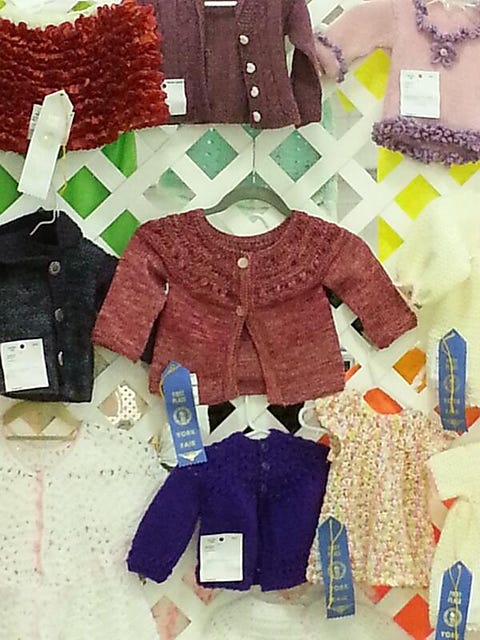
In my experience, how hard a pattern is to knit doesn’t matter so much as how well you’ve executed the knitting. If you knit something that doesn’t contain holes, errors, pet hair or dangling threads, you'll probably get a ribbon. If you have any questions or need support, there’s a Ravelry group called “Going to the Fair” that can help!
Oh no! I’ve missed the deadline for registration!
Unless you put a notification on your calendar, it’s easy to miss fair deadlines. I’m sure the number of submissions at county fairs have dwindled over the years, and if you work a normal day job, it’s inconvenient to try to drop things off and pick them up at the designated times.
If you just looked up your closest fair and realized you missed the dates to submit exhibits, there’s always next year! Look through the premium book and make a list of the items that are accepted for exhibit, and plan to make some of them. Generally the types of knitting projects that are accepted don’t change drastically from year to year. It’s also a great way to get a head start on holiday knitting. Some of my items for the fair have later been Christmas gifts! If you’re too late to register your projects, attend this year’s fair anyway, and scope out the competition for next year!
My experiences with county fairs
I don’t know what compelled me to submit my first knitted items to the York County fair, but in 2012, I submitted a pair of orange socks I had made for my brother. I think at the time I wanted to see where I was, skill-wise as a knitter and to have my work judged. When I went to the fairgrounds to see the knitting on display, I found I got a third-place ribbon for the socks. I was hooked, ready to up my game and chase blue ribbons and the elusive “Best in show.”
I finally won Best in Show at the St. Lucie County Fair when I lived in Florida, in 2017, for a pair of purposefully mismatched socks. I was pretty thrilled to have the best knitting at the county fair that year.
I don’t submit items to the fair every year. It honestly depends how busy I am around the fair deadlines, and I imagine a lot of people are just busy with vacations and family time during the summer. The last time I submitted items to the fair was in 2022, so it’s about time to wrangle some knitwear for judging. I’ll update you on how I do this year!
Feedback (and how to get better at knitting without it)
In most of the fairs I’ve competed in, the judges have not offered feedback on my items. The only fair that did was the St. Lucie County Fair in Florida, where I distinctly remember the judges calling a pair of Swarovski crystal bead-studded gloves I made “tedious work” and begrudgingly giving a blue ribbon. (They also said some really nice things about my other knitting projects, but you always remember the weird things.)
If you don’t get a blue ribbon on your work, look at items that have been submitted in the same category and see what is better about them. Do the stitches look more even, the piece better finished? Is it in a color that is more suitable for the pattern? Does the physical object itself look like it was made from a more challenging pattern?
In many cases, you might have done everything right, but it’s a matter of the judge’s taste. People have different ideas about what is considered challenging or “good” in knitting. Depending on how judging is done, your knitting could have been compared with someone else’s, or it was judged based on a rubric. I like submitting my knitting for judging because I like to find clues in others’ work that will help me get better as a knitter. Don’t sweat it if you get feedback you don’t agree with or you don’t get the result you wanted. Ultimately the only person you’re competing with is yourself!


